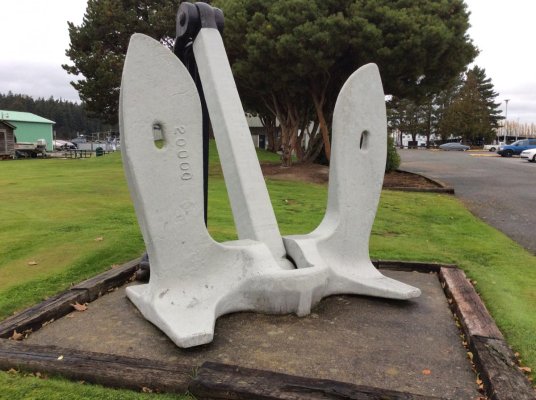This is in regards to choosing the better primary, stockless anchor on a single-anchor trawler. Weight would be the same for either. The choice is between a Poole TW and an AC-14. Both are high holding power, and at minimum, will be sized per class rules. The application is a “cruising” boat, so there is no predominant bottom type to plan for.
I got in touch with Sotra and their response was:
“The answers to your questions below is the Poole TW. They are better on sandy bottom, and AC14 anchors are better for stone bottom.”
My feeling however leans more towards the AC14. The other relies too much on fluke area, like a Danforth which historically does poorly in grass or rock. If the designer okays, then I may up the weight one step higher, perhaps with heavy leader, but that is to be determined.
It seems that few on this forum use stockless anchors, but I would appreciate some feedback, especially from the commercial guys, who usually see these on their workboats. Thanks
I got in touch with Sotra and their response was:
“The answers to your questions below is the Poole TW. They are better on sandy bottom, and AC14 anchors are better for stone bottom.”
My feeling however leans more towards the AC14. The other relies too much on fluke area, like a Danforth which historically does poorly in grass or rock. If the designer okays, then I may up the weight one step higher, perhaps with heavy leader, but that is to be determined.
It seems that few on this forum use stockless anchors, but I would appreciate some feedback, especially from the commercial guys, who usually see these on their workboats. Thanks

